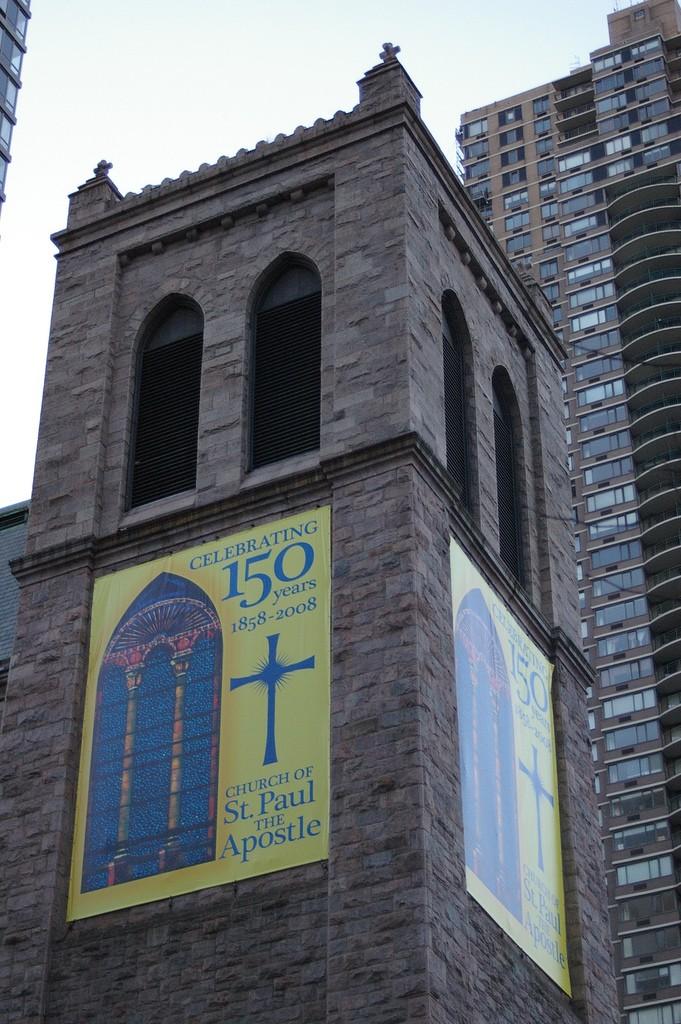St. Paul’s Celebrates 150th Anniversary
June 1, 2011
Published: January 31, 2008
FCLC—The Church of St. Paul the Apostle is ringing in 2008 by celebrating its 150th anniversary. Celebrations began on Oct. 28, 2007, when Cardinal Theodore E. McCarrick, Archbishop of Washington, said mass. The festivities continued throughout the last week of January, remembering the founder of the church, the Rev. Issac Thomas Hecker.

Many students at Fordham College at Lincoln Center (FCLC) attend Fordham’s weekly Sunday mass at St. Paul’s and get involved in the church through campus ministry. When asked about the significance of the anniversary, Anthony Giacona, FCLC ’08, said that it is “a testament to the permanent presence of not just St. Paul’s and the Paulists, but the Catholic Church in the world from when Christ Himself founded her.”
Dave de la Fuente, FCLC ’10, said the Paulists are “an example of how to act on [his] personal faith, because mission, service and evangelization are intrinsic to being a Christian and a Catholic. They have done a lot to enrich the local community,” he said, “In terms of mission and ministry, Fordham has collaborated a lot with St. Paul’s. Such a fruitful and active religious order next to our school is great for our university.”
According to the Rev. Ronald A. Franco, associate pastor at St. Paul’s, Hecker founded both the church itself and the Paulist Fathers in 1858. Franco said that Hecker instituted the Paulists as Catholic missionaries with the intention of “spreading evangelism across the United States.” Many of the celebrations commemorated the founder of St. Paul the Apostle.
On the evening of Jan. 25, candlelight prayer was held at the church to celebrate the Feast of the Conversion of St. Paul. On Jan. 26, the celebrations started with a mass and meeting held by the Hecker Guild at 10 a.m., followed by a vigil prayer at Hecker’s tomb at 7 p.m., and a dramatic performance by the Rev. James DiLuzio of Hecker’s life story. At 10 a.m. on Jan. 27, the Archbishop of New York Cardinal Edward Eagan opened the cause for making Hecker a saint.
Franco said that the Ninth Avenue location originally had only a small church standing; construction on the present building began in the 1870s and the church officially opened in 1885. Franco said that the establishment of the parish greatly contributed to the growth of the area. “The west side quickly became a densely populated area of working-class parishioners,” Franco said.
Franco said that Hecker himself, employing many of the “great American artists of the time,” planned the interior decoration of the church. Stanford White designed the high altar and John La Farge drafted the windows. The mural of the crucifixion located directly above the exit was done by William Laud Harris, and the “second of only two” bronze sculptures of Michelangelo’s Madonna and Child is found on the north side of the church.
Franco particularly noted the ceiling of the church. The Rev. George Searle, a “renowned astronomer,” designed it to look like the night sky, and the constellation configuration is that of the stars at midnight on Jan. 25, 1885—the day of the foundation of the church.












